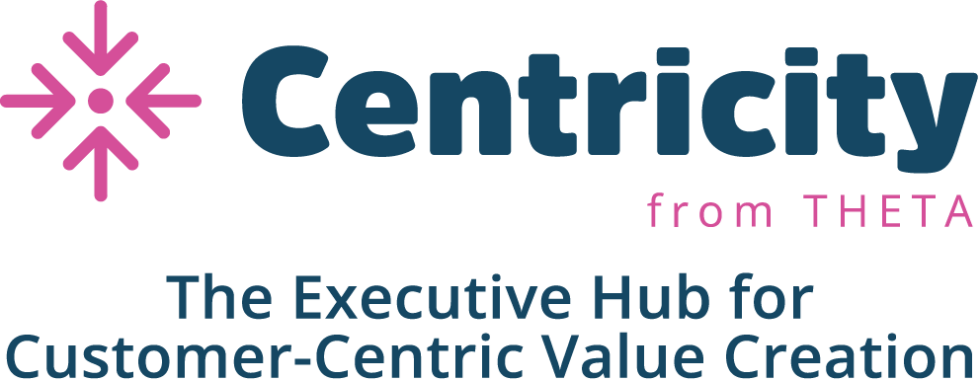The CMO and CFO Should Align Around CLV to Be Growth-Driving Heroes
Written by: Tara Heptinstall, Theta | June 2023

Team up to tackle customer-based value prediction and be amazed at the power of truly customer-centric insights
Many business experts have written about the critical, sometimes dysfunctional, relationship between CMOs and CFOs. But when marketing and finance leaders work together toward a specific goal ─ such as calculating customer lifetime value (CLV) and leveraging the resulting insights, the benefits can be significant.
In these instances, marketing leaders have an opportunity to shift the deep-rooted narrative that the marketing function is not financially savvy and doesn’t provide accountability around customer acquisition costs (CAC). At the same time, a CLV-oriented collaboration with marketing executives can enable finance leaders to broaden their perspectives on and understanding of the sources/nature of future revenue, enabling them to make more informed decisions about allocating resources and optimizing commercial efforts.
There are numerous resources available on the benefits of CLV analysis, along with the methodologies to perform that analysis correctly (see a few links below this article). And once the CMO and CFO agree they are on the “path to profitability” together and apply these proven techniques, they can emerge as well-aligned heroes in the story of their organization’s success.
Collaboration is Key
Let’s walk through an example based on the real insights we often provide to our clients at Theta and how they are used to build best practices within an organization. This company, we’ll call Halloo, a small but fast-growing retail chain that sells frequently purchased items, has approximately 500,000 active customers. The CFO and CMO recently attended a workshop together on the CLV approach to predictive value. They’ve agreed to get their teams aligned around a project to understand individual CLVs across their entire customer base in order to develop better strategic programs. They pulled in the head of data and analytics on this endeavor as well.
Historically, Halloo’s marketing programs, while measured at a tactical level (e.g., number of marketing qualified leads, number of sales qualified leads, conversion rate, channel performance, etc.), did not track whether or not the acquired customers were profitable to the business over the long run. Nor was there alignment with finance on how to accurately measure CAC.
In fact, they had never even discussed how to define these all-important metrics. The customer success and account management teams, similarly, designed their business processes around overall satisfaction metrics (such as NPS). But they weren’t attuned to how their resources aligned to support the experiences of the most valuable customers.
As the dynamic C-suite duo kicked off their customer-based predictive analysis together, they did a few key things that made a difference.
Align on Metrics and Definitions
Perhaps the first most important thing for the CMO and CFO was aligning around some key definitions. Here’s a recommendation on where to start.
CLV: The net present value of all variable profits and costs associated with a customer, inclusive of customer acquisition costs, until the customer ends his/her relationship with the firm. The discount rate should be equal to the relevant cost of capital associated with the business unit the customer was acquired into.
CAC: The total cost of acquiring a new customer. To calculate average CAC, total up all of the costs that go into your customer acquisition tactics for a given period. Then divide by the number of customers acquired during that period.
Post-Acquisition Value (PAV): The net present value of variable profits, ignoring customer acquisition costs (CAC).
Residual Lifetime Value (RLV): The amount of additional value we expect to collect from an existing customer, not including past profitability up to a certain point in time.
Conduct Accurate Analysis of CLV and Other Unit Economics
Using a blended team of internal data experts across several functions and a strong program manager at the helm, Theta provided the CLV-related metrics/insights and guided the efforts to fully leverage them. This allowed the Halloo visionaries to look deep into the transactional behavior of their customers. Dividing the acquired customers into cohorts (i.e., based on time of acquisition), the team used credit card data and loyalty program data to analyze purchase frequency and total spend.
The team was able to validate two distinct predictive models — one for their loyalty-program customers and one for the rest of the customer base. The modeling process also accounted for internal and external factors that influenced customer behavior dynamics, such as the levels/parameters of the loyalty program, impacts from a major product overhaul, and overall macroeconomic conditions.
Determine Individual-level Lifetime Value Predictions
The team was able to determine individual-level CLV predictions across multiple cohorts. Each model was carefully validated, and its performance was tested to ensure robust predictive accuracy. The cross-functional nature of the team and the collaboration model driven from the top ensured the successful implementation of the work and increased the confidence of senior management in the findings. They requested the data be refreshed regularly and encouraged a new initiative within the IT organization to determine how to integrate the near-real-time updates of CLV directly into key information systems.
Working together, the CMO and CFO then aligned around what the actual CAC should be for each new customer, given that they were now going to strategically target more prospects like these high-value customers and work across the organization to keep the high-value customers they already had.
Develop Strategies Aligned to the Insights
The Halloo executive team continued working together to devise segment-level strategies for their highest value customers. They organized special teams within key functions devoted entirely to the ongoing evaluation, development, and retention of these high-value customers. They developed even stronger loyalty program parameters and initiated deeper research programs to understand additional needs and wants from this customer group to help inform product development, pricing, cross-selling, customer service, and other strategic initiatives.
The marketing organization also conducted more informed touch-point analysis to find improvements in the overall customer experience for high-value customers.
Conclusion
Overall, the financial impact of marketing and finance working together on CLV analysis can be powerful. When the CMO and CFO are jointly armed with highly accurate individual-level CLVs, their ability to influence the organization on a broader scale becomes easier. By identifying opportunities to increase customer retention and loyalty, upsell and cross-sell to customers, and allocate marketing resources more effectively, they can help their business drive increased revenue and improve its bottom line.
